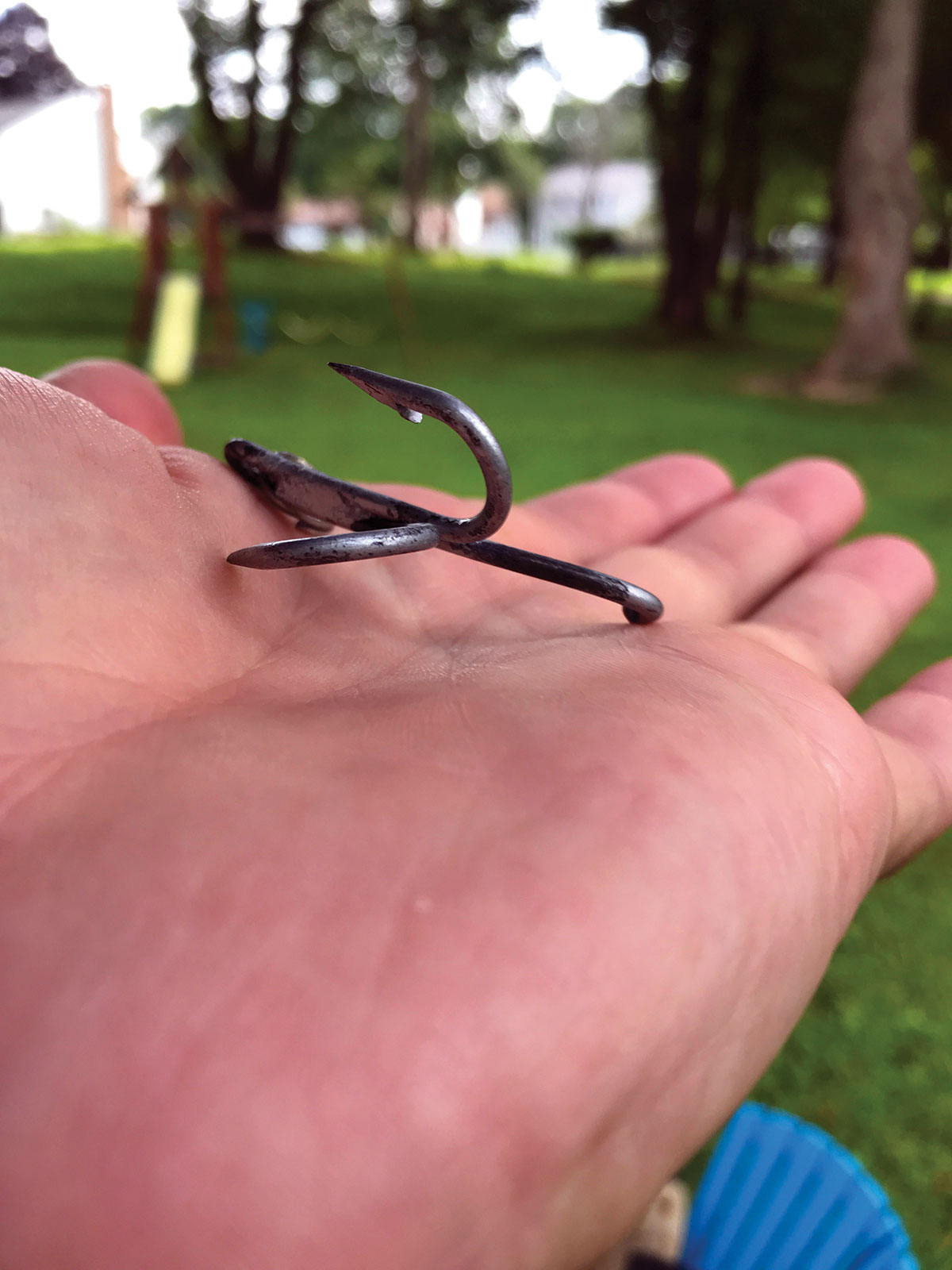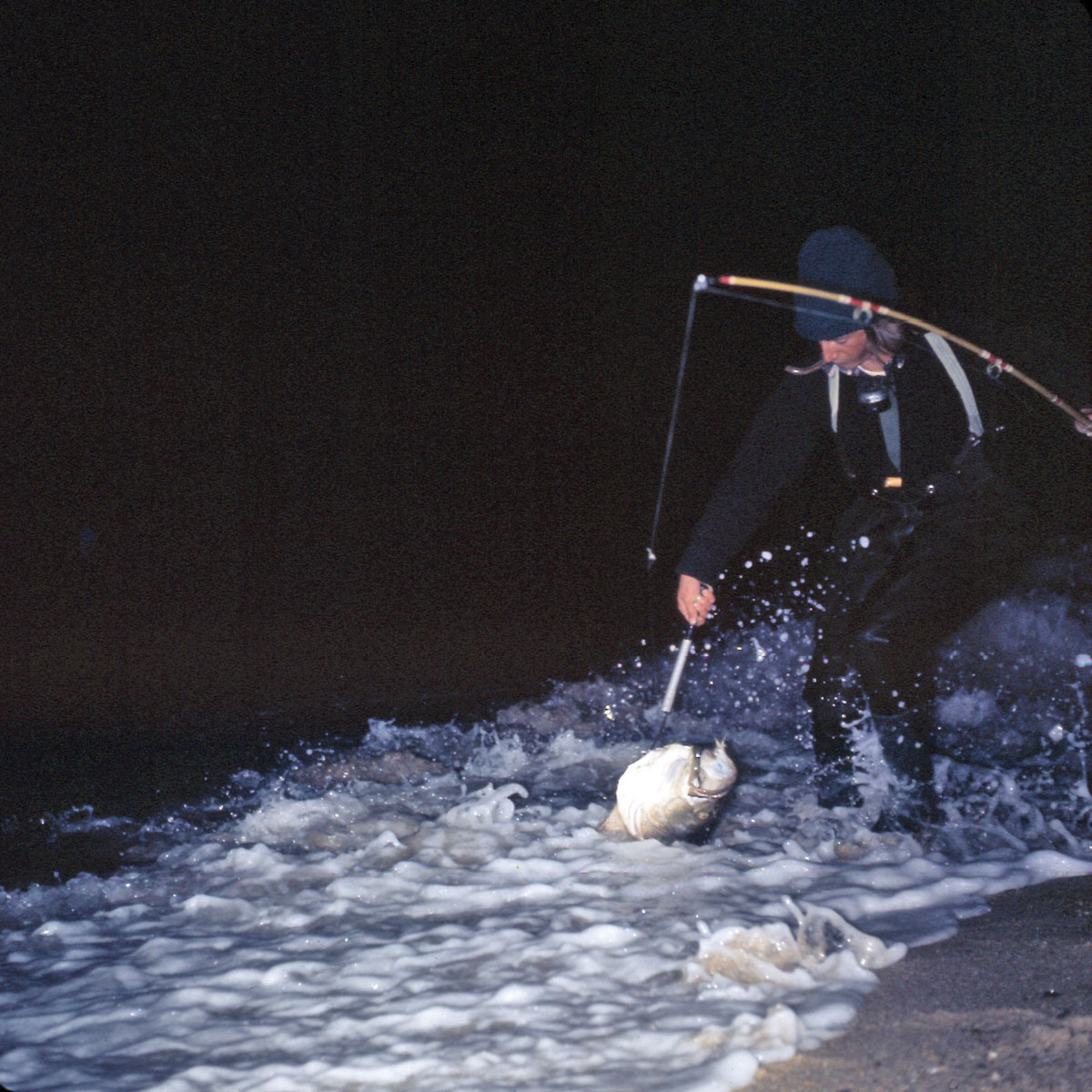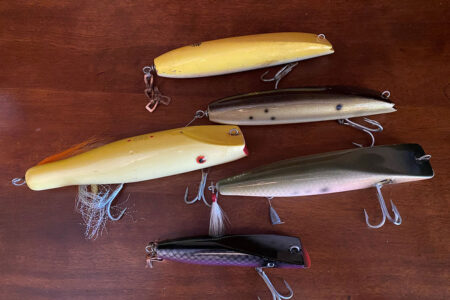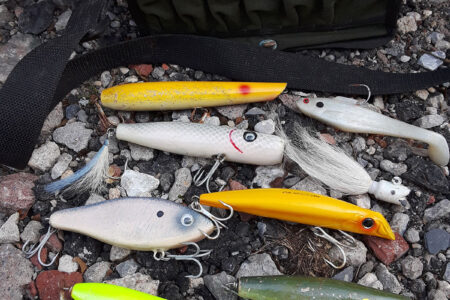 It’s one thing to coax a hit, getting it in is quite another story altogether.
It’s one thing to coax a hit, getting it in is quite another story altogether.
All through the post-moratorium period in the late ‘90s, when the world of striper fishing was reemerging, I fielded questions from anxious surfcasters about the availability of “keepers.” I was talking to hundreds of fishers each show season at the many seminars that I conduct about fishing for bass. The universal frustration was that these people were, in many cases, catching hundreds of fish each season but couldn’t get any that were large enough to keep. Invariably, I would question them about their experiences striper fishing and, more often than not, when asked if they had lost any decent fish, the answer would be—after some hesitation, some embarrassment—that they had.

Two things that cover most situations and were probably responsible for the loss of the more important fish, ones not like those they were used to catching: a simple drop where the hook pulled out; and, secondly, the line breaking. Most often, especially with really big bass, losses were attributable to the latter. These exchanges on the subject became so characteristic that I soon learned to do my questioning in private, because I had learned that admitting to the reason was too great an embarrassment to have the discussion in front of an audience. Naturally, my answer was that ‘those were the ones’, because I relied upon the presumption that most of the time it would be the bigger bass that would tax the line to the breaking point. True, it was a generality, but it probably explained the loss in most situations. I was not there, but I’ve been there often enough for my own fish, as well as those around me, to know that loss incidents go up with bigger fish. Because they lack experience, many anglers don’t know the breaking limits of their equipment. You can only pull so hard on a big fish before the line snaps. Worse, many breaks occur because the fish happens to pull very hard at the same time as the fisher; then there are two sources of overt strain with which the tackle must contend. Never forget that it is not often the rod or the reel that is going to burst, it will be the line. The line is your parachute.

An inevitability of having so many small fish for so many years is that equipment choices evolve downward. It is only natural, after having caught 200 schoolies a given season, to tailor what is in use to what is being caught. The logic is that you don’t hunt squirrels with an AK-47. Moreover, light tackle is more user friendly because it is light in weight while producing greater casting distances with less effort. Often, there are more hits because of the lighter lures in use with light equipment. Freshwater tackle in the salt delivers a size of lure that is often nearer in size to that of forage and fits in the mouth of even a bucketmouth striper. For generations, outdoor magazines have advanced the notion that the use of light tackle is more sporting, that it is the choice of pros, when the reverse is true. “Pros” fish right, and hunting bear with a .22 is wrong. Even a fisher who is experienced enough to take on a huge striper with kids’ equipment faces practically insurmountable obstacles to putting such a fish on the beach.
Fishing commercially 30 years ago, while raising four children on Cape Cod beaches, we had dozens of experiences where the monster fish overwhelmed what was used. Keep in mind that all of us, even the youngest of the three girls, had extensive backgrounds in the striper surf and had caught hundreds of two-handed stripers. Still the temptation of reaching for that little “schoolie rod” was so universal that all four of our youngsters quarreled over its use so much that they eventually agreed on taking turns with it. Invariably, one of them would fetch dad, because the one who was exercising his/her turn was on to a trophy striper. Typically, I would find the child following down-tide, the sound of the drag humming.

The most productive assessment of the situation was in looking at how much of the reel’s capacity had remained. Of course, in a balanced outfit, the capacity of the reel in yards was about what we were all used to with the proper weight tackle, say over 240 yards. It was the size of the line, its volume, its strength, which was wanting. With light line, effective fishing requires a light drag. The striper puts greater distance from you more easily. Even taken to its most dangerous level of torque, it is only minutes before all the line is out there with little remaining on the reel. Worse, and we are not talking a routine, every day fish here, it is not tired from its efforts. You are low on line and fighting a green fish.
Strong gamefish, green fish, have ‘their head’. What is meant by this is that the fish is able to freely turn its head in any direction as opposed to a situation in which a fisher with heavy tackle keeps moving the fish toward the beach where its head is facing the surfcaster. It’s crass, but fish cannot swim backwards. You can tell when a big fish has its head as you can feel blows to the taught line. It is as though someone was striking your line with a stick, and it provides clear evidence that you are feeling each pump of the striper’s tail as it seeks to swim off. A fish with its head can breathe more comfortably and can change direction with ease. Trouble often comes in a change of direction for two reasons: First, the hook can pull free from a new force direction, and a free swimming fish will inevitably wrap a turn of line around its body. Trouble.

One night in Charlestown, RI, I was standing with our daughter, Sandra, while she fought a monster that just happened to be mixed with a bunch of small bass on light tackle. After close to an hour of back and forth trading, I watched her line go slack. She had done nothing wrong. There were no overt forces applied. Still, the line had failed. I don’t say broken, because what really happened was the last 5 feet of line were laced with little nicks and cuts from having worked itself under the silver-dollar sized scales of the moby bass. And, with each pump of its body, each flexing, some parts of the line were run across scales and some parts were moved under new scales. Thus, we not only had weak sections, we had multiple sections of damaged line. Her 12-pound test line, while new, was reduced to 4. While this is not a book about children, I can tell you that they cry when dream fish break free—just like their parents.





